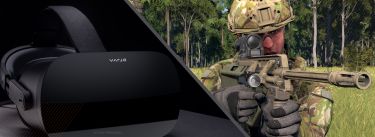Global Military Heads-up Display (HUD) Market 2017-2021: Enhancement in Situational Awareness with Integration of Night Vision in HUDs - Research and Markets
The "Global Military Heads-up Display (HUD) Market 2017-2021" report has been added to Research and Markets' offering.
The global military heads-up display (HUD) market to grow at a CAGR of 9.6% during the period 2017-2021.
Global Military Heads-up Display (HUD) Market 2017-2021, has been prepared based on an in-depth market analysis with inputs from industry experts. The report covers the market landscape and its growth prospects over the coming years. The report also includes a discussion of the key vendors operating in this market. To calculate the market size, the report considers new developments, procurements, and installations.
One trend in the market is emergence of DLE technology for HUDs. HUDs are becoming a fundamental part of almost all military programs, including those for military platforms like vehicles and aircraft and wearable gears for dismounted soldiers. The traditional HUD designs incorporate many heavy, degradable, and maintenance-intensive components that increase the complexities of military programs.
According to the report, one driver in the market is enhancement in situational awareness with integration of night vision in HUDs. The integration of night vision technologies in HUDs provide operators with enhanced situational awareness. Night vision HUD systems use infrared sensors, which are built into the military platforms or a soldier's wearable gear, and synchronize the image from the sensors onto the HUD. This integration overlays the imagery from thermal infrared sensors onto the transparent screen of a HUD to provide operators with a monochromatic and illuminated view of the surroundings.
Key vendors
- BAE Systems
- Elbit Systems
- Honeywell International
- Rockwell Collins
- Saab
Other prominent vendors
- Dassault Aviation
- Esterline Technologies
-
Thales Group
Key Topics Covered:
Part 01: Executive Summary
Part 02: Scope Of The Report
Part 03: Research Methodology
Part 04: Introduction
Part 05: Market Landscape
Part 06: Market Segmentation By Product Segment
Part 07: Geographical Segmentation
Part 08: Decision Framework
Part 09: Drivers And Challenges
Part 10: Market Trends
Part 11: Vendor Landscape
Part 12: Appendix
For more information about this report visit https://www.researchandmarkets.com/research/cs3xjc/global_military
View source version on businesswire.com: http://www.businesswire.com/news/home/20170922005497/en/




